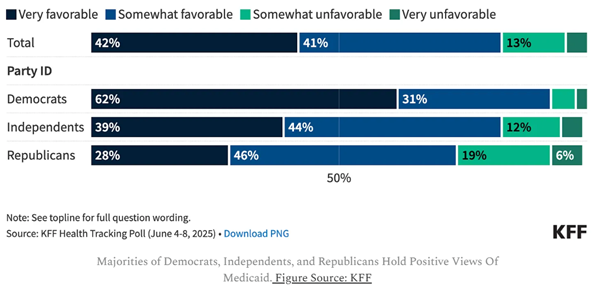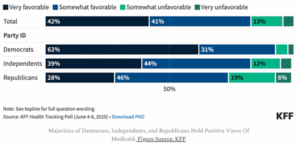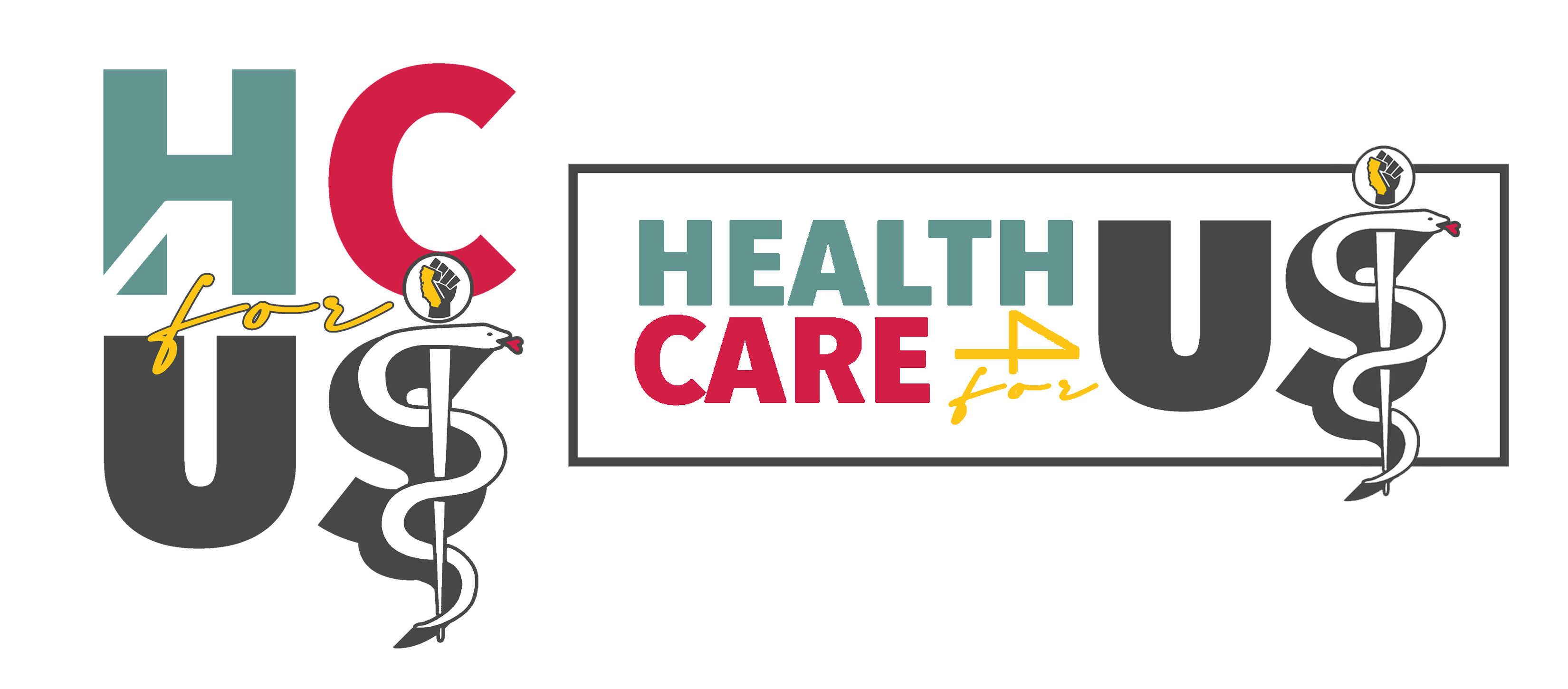Medicaid cuts: The how and why
By Katelyn Jetelina
July 9, 2025
 Last week, Congress passed the largest federal healthcare cuts in U.S. history, with nonpartisan modeling suggesting $1 trillion in cuts over the next decade. This represents the most significant change to our healthcare system since the passage of the Affordable Care Act. However, instead of moving toward a healthier, more prosperous future—where we prevent disease, expand access to care, feed children, and increase life expectancy—this bill chose the opposite.
Last week, Congress passed the largest federal healthcare cuts in U.S. history, with nonpartisan modeling suggesting $1 trillion in cuts over the next decade. This represents the most significant change to our healthcare system since the passage of the Affordable Care Act. However, instead of moving toward a healthier, more prosperous future—where we prevent disease, expand access to care, feed children, and increase life expectancy—this bill chose the opposite.
Due to the flood of news, only 8% of Americans are even aware that this was included in the “Big Beautiful Bill” that passed. There’s also been a stunning lack of plain-language explanations. Even headlines like “11 million people could lose health insurance” don’t answer the basic questions: How? Why?
Here’s a breakdown of what happened, the implications for you and your community, and what you can do about it.
What is Medicaid?
Medicaid provides health insurance for more than 78 million Americans (1 in 4 people). It acts as a safety net in two ways:
- For people with low or limited income, pregnant women, people with some disabilities, and children
- For people eligible for both Medicare and Medicaid, such as older adults needing long-term care
It supports:
- Half of all births in the U.S.
- Long-term care for millions of seniors
- Children with special needs and adults with chronic illnesses
- Hospitals, particularly in rural and underserved communities
And it’s incredibly popular: More than 83% of Americans view Medicaid favorably.
(click to enlarge image)

Majorities of Democrats, Independents, and Republicans Hold Positive Views Of Medicaid. Figure Source: KFF
How is it paid for?
Medicaid is a state and federal partnership, with both levels of government contributing to the pot to fund healthcare.
The federal government pays a large share of Medicaid costs for each state. Precisely how much it pays is determined by a variety of factors, including the state’s per capita income and who is covered, but it can foot 50-90% of the state’s bill (or parts of it). In exchange for the funds, there are federal rules that specify which services must be covered, how to provide coverage for those services, and the cost of those services.
Individual states also cover costs and set their coverage policies: who’s eligible for services, what services are covered, and payment policies.
How are cuts being accomplished?
This was not part of the regular annual budget process. That’s coming in October, which includes things like cuts to research through NIH and CDC budgets.
Instead, Medicaid cuts were passed through “reconciliation”—a fast-track process that allows Congress to make significant changes to taxes and spending with just a simple majority in the Senate (instead of the 60-vote majority needed for a fiscal budget). Reconciliation is the same tool that was used for the 2017 Trump tax cuts and the 2021 Covid-19 relief package.
Medicaid is squarely in the crosshairs because it accounts for a large portion of the federal budget, behind Medicare and Social Security (which are, politically, third rails for politicians to touch).
What is the reasoning behind cutting Medicaid?
Supporters of the cuts often cite…
[READ THE COMPLETE ARTICLE HERE]
